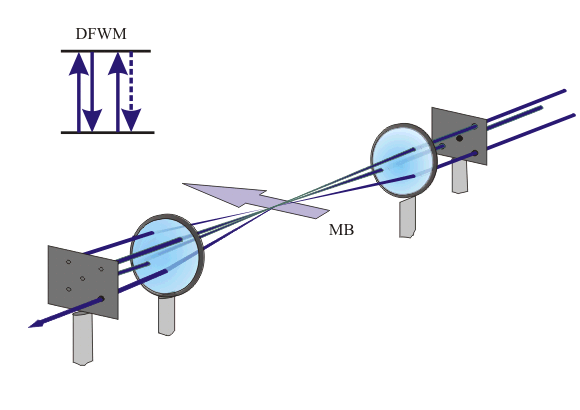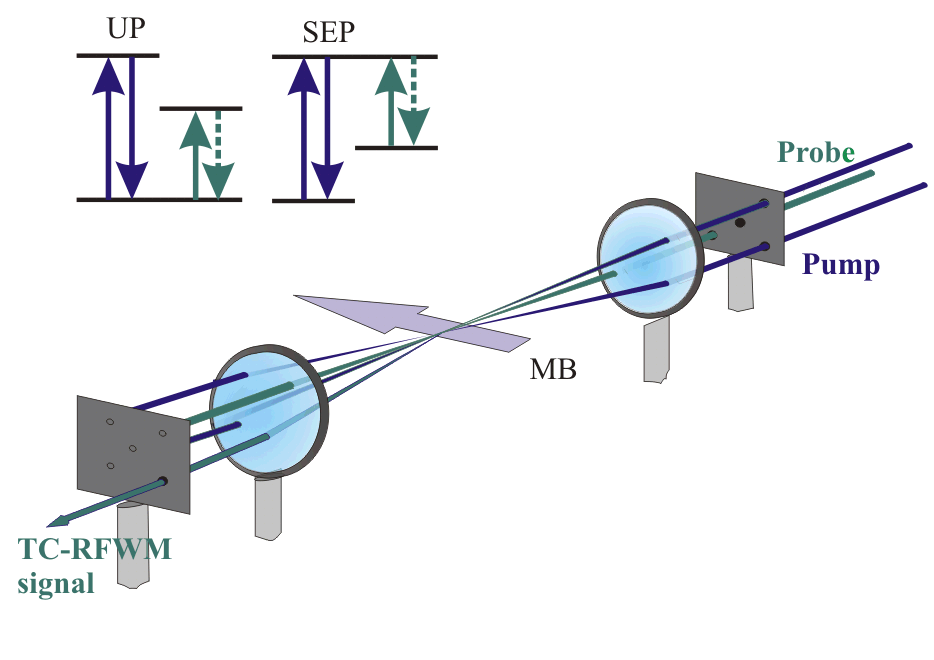 |
|
|||||||||
|---|---|---|---|---|---|---|---|---|---|---|
|
Updated: 16.04.2014 |
Nonlinear Spectroscopy: Four-Wave MixingApart from more conventional linear spectroscopic methods (Absorption, Cavity Ring-Down, Laser-Induced Fluorescence, Multi-Photon Ionization), Degenerate Four-Wave Mixing (DFWM) and its double-resonance variant Two-Color Resonant Four-Wave Mixing (TC-RFWM) are applied.
Degenerate Four-Wave MixingThe laser beam is divided into three beams using a combination of optical components to establish a forward boxcar DFWM configuration. The generated beam wave vector, k4, is defined by the phase-matching condition, k1 + k3 = k2 + k4. A quartz convex lens (f = 1000 mm) is used to focus the incident DFWM beams through a window into the molecular beam apparatus ≈ 15 mm downstream from the nozzle tip. The signal beam is recollimated by a second lens (f = 1000 mm) and allowed to propagate roughly 3 m through several irises and optical and spatial filters to remove interfering scattered light and unwanted fluorescence. The signal beam is detected by a PMT. 
Two-Color Resonant Four-Wave MixingFor the double-resonance experiment, one of the three incident beams k2 is replaced by a laser beam of a different frequency (PROBE beam) to establish the forward boxcar configuration for TC-RFWM. The equal frequency input beams k1 and k3 are commonly referred to as PUMP beams. 
|